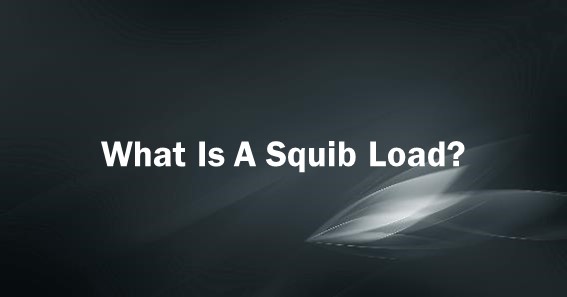Are you curious to know what is a squib load? You have come to the right place as I am going to tell you everything about a squib load in a very simple explanation. Without further discussion let’s begin to know what is a squib load?
Firearms are powerful tools that demand responsible handling and an unwavering commitment to safety. However, even with proper precautions, there can be unforeseen occurrences that pose a risk to shooters. One such potential hazard is a squib load. In this blog post, we will explore what a squib load is, why it is dangerous, and how shooters can stay vigilant to ensure their safety and the safety of others.
What Is A Squib Load?
In the realm of firearms, a squib load refers to a cartridge that produces an insufficient amount of propellant gas to propel the bullet out of the barrel and exit the firearm properly. As a result, the bullet may become lodged in the barrel or fail to exit with sufficient velocity. Squib loads can occur due to a variety of factors, including faulty ammunition, improper reloading practices, or equipment malfunctions.
Recognizing A Squib Load:
Identifying a squib load is crucial for the safety of shooters. The following signs may indicate the presence of a squib load:
-
Muffled or Unusual Sound:
Upon firing, a squib load may produce a noticeably different sound compared to regular ammunition. It can sound muffled or weaker, indicating a lack of sufficient propellant gas to propel the bullet.
-
Reduced Recoil:
A squib load may result in a reduced or significantly diminished recoil. This can be a noticeable departure from the typical recoil experienced with regular ammunition.
-
Failure to Cycle:
After firing a squib load, the firearm may fail to cycle properly. The lack of sufficient force can prevent the slide or bolt from moving back and forth as expected.
-
Bullet Lodged in the Barrel:
In severe cases, the bullet may become lodged in the barrel, preventing the firearm from functioning properly. This can be a dangerous situation and must be addressed with caution.
-
Dangers of Squib Loads:
Squib loads pose serious risks to shooters if not promptly recognized and addressed. Firing a subsequent round after a squib load can result in a catastrophic failure, known as a “barrel obstruction.” The high-pressure gases generated by the subsequent round can cause the lodged bullet to become dislodged, leading to a ruptured or burst barrel. This can cause severe injury to the shooter and potentially those nearby.
Safety Measures And Prevention:
-
Vigilance and Awareness:
Maintaining a high level of vigilance and awareness during shooting sessions is paramount. Carefully observe and listen for any unusual signs or deviations from normal firearm behavior. If something feels or sounds off, stop shooting immediately and investigate further.
-
Inspect the Barrel:
In the event of a suspected squib load, always treat the firearm as if it is loaded and exercise caution. Never look down the barrel to check for obstructions. Instead, point the firearm in a safe direction, remove the magazine, and open the action to visually inspect the barrel. If a bullet is lodged, do not attempt to clear it yourself. Seek the assistance of a trained gunsmith or firearms professional.
-
Practice Proper Ammunition Handling:
Use factory-made ammunition from reputable manufacturers whenever possible. If reloading ammunition, follow established guidelines and best practices. Double-check powder charges, ensure proper bullet seating, and inspect each round for defects before use.
-
Education and Training:
Proper education and training are crucial for firearm safety. Seek out reputable sources for firearms training and familiarize yourself with the specific characteristics and potential hazards associated with your chosen firearm.
Conclusion:
Safety should always be the highest priority when handling firearms. Squib loads are a potentially dangerous occurrence that can compromise the safety of shooters and those around them. By remaining vigilant, recognizing the signs of a squib load, and taking immediate action, shooters can mitigate the risks associated with this hazard. Remember, responsible firearms ownership involves ongoing education, adherence to safety protocols, and a commitment to maintaining the highest standards of safety at all times.
Get Information About Advantages On Mainadvantages
FAQ
What Causes A Squib Load?
Squib rounds are possible in all firearms. They are most often caused by negligence in the powder loading process (insufficient or no powder load), or a failure of the primer to ignite the powder at all.
What Is The Difference Between Misfire And Squib?
A misfire is when the primer fails to ignite the powder. Hang fires and misfires can happen with any kind of firearm. A “squib load” occurs when the projectile becomes stuck in the barrel and does not exit after firing. This can be extremely dangerous if another round is fired in the obstructed barrel.
Does A Squib Load Damage The Barrel?
A squib can cause the entire barrel and chamber to explode. Videos of these accidents show some guns being torn completely in half. The amount of damage depends on many factors, such as the size of the gun and exactly where the round is stuck, but it’s quite dangerous no matter what.
Is A Squib Load A Cartridge Malfunction?
A squib load is a firearm malfunction that occurs when an ammo cartridge does not have enough powder to push the bullet all the way out of the barrel.
I Have Covered All The Following Queries And Topics In The Above Article
What Is A Squib Load In A Gun
What Is A Squib Load?
What Is A Squib Load On A Pistol
What Is A Squib Load Ftf Ftf
What Is A Squib Load On A Gun
What Is A Firearms Squib Load
What Is A Squib Load
What happens if you shoot a squib
What is a squib load?
